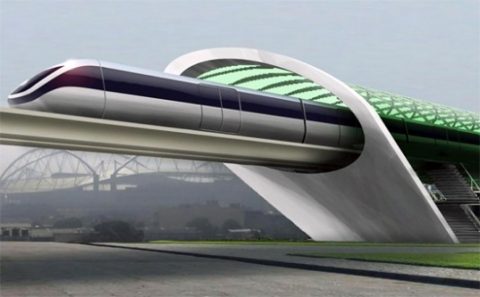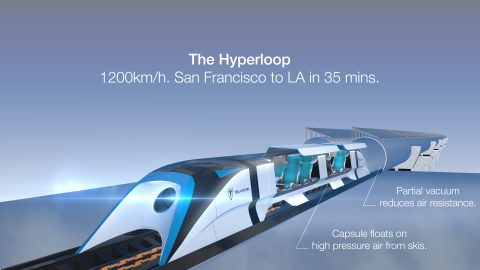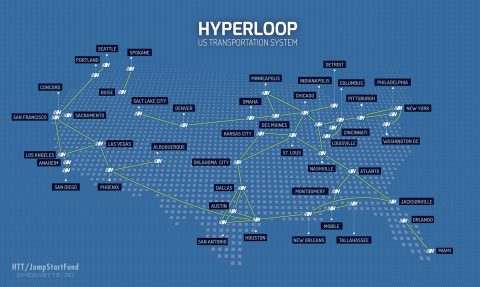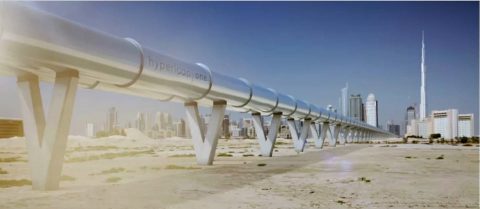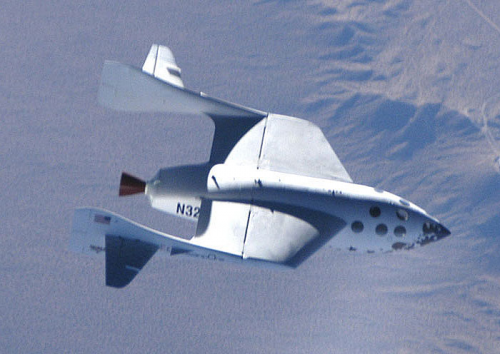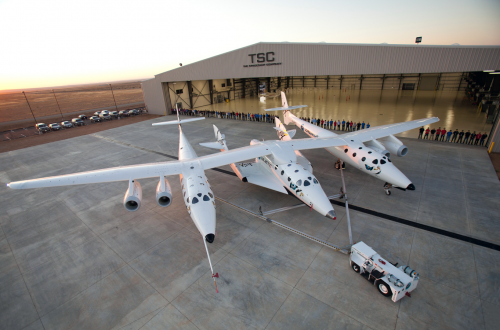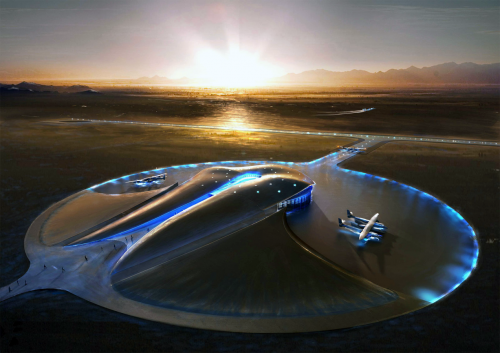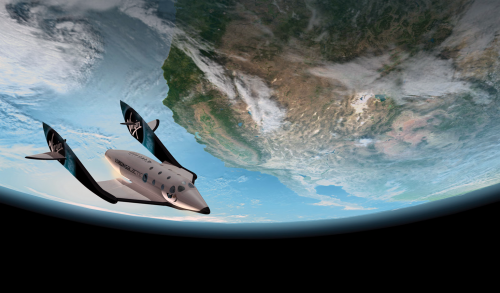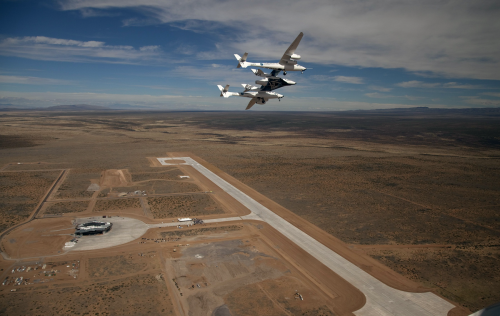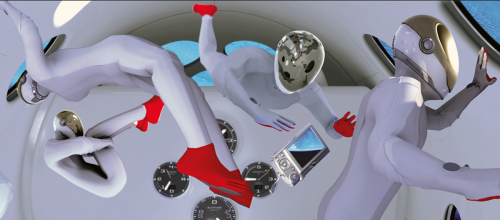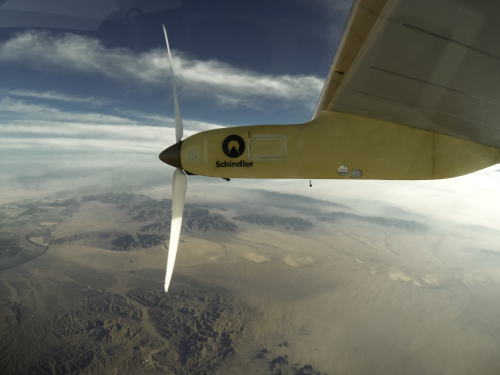 click > enlarge
click > enlarge
Solar Impulse, the solar airplane of Bertrand Piccard and André Borschberg, successfully launched the “Clean Generation” initiative by completing the first leg of the 2013 Across America mission – the first crossing of the United States by a solar-powered airplane capable of flying day and night. Along with the pilots, 14,212 people have virtually travelled from California to Arizona in the cockpit via a streamed feed.
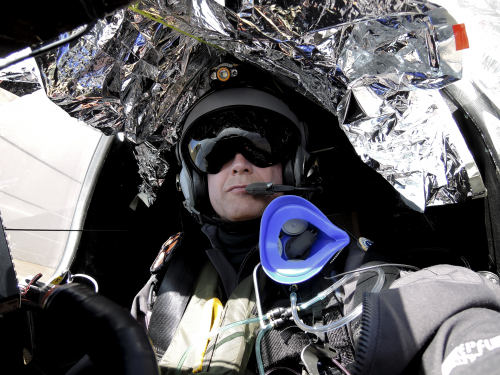 bertrand piccard in the cockpit
bertrand piccard in the cockpit
[ flight report: san francisco > phoenix ]
Pilot: Bertrand Piccard, Initiator and Chairman
Take-off time: May 3rd 2013 06:12 AM PDT (UTC-7)
Time of landing: May 4th 2013 00:30 AM MST (UTC-7)
Flight duration: 18h18 min
Average ground speed: 65,5 km/h (40,6 m/h)
Highest altitude reached: 6’400 m (21’000feet)
Average altitude: 3’050 m (10’000 feet)
Flight Distance: 1203 km (~650 NM)
[ mission-at-a-glance ]
May 3rd 2013: First leg San Francisco/Moffett Airfield – Phoenix/Sky Harbor
Mid May 2013: Second leg Phoenix/Sky Harbor – Dallas/Fort Worth
End May – Early June 2013: Third leg Dallas/Fort Worth – St. Louis/Lambert Airport
Mid June 2013: Fourth leg St. Louis/Lambert Airport – Washington DC/Dulles
Early July 2013: Fifth and last leg Washington DC/Dulles – New York/JFK
A number of events will be organized during the Phoenix stopover including visits open to the public on Sunday May 5th and Tuesday May 7th. Because the solar airplane will be in a secured airport zone, the spaces available will be limited in accordance with airport security rules. People have to [ register in advance ].
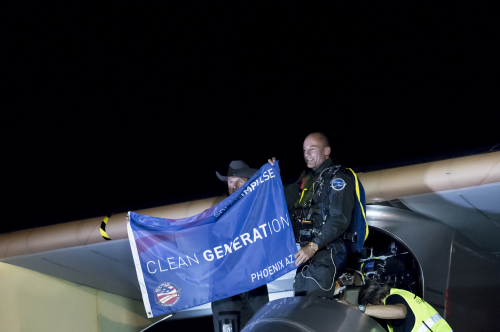 andre borschberg and bertrand piccard with the “clean generation” flag after landing at sky harbor
andre borschberg and bertrand piccard with the “clean generation” flag after landing at sky harbor
[ original release – edited ]
On May 3rd Solar Impulse, the Swiss solar powered airplane, will depart from San Francisco with Bertrand Piccard in the single seater cockpit, to complete the first leg of its coast-to-coast flights across the USA: first stop will be Phoenix (AZ). It is the first time that a solar airplane capable of flying day and night without fuel, will attempt to fly across America. This journey is also the occasion to launch an initiative called “Clean Generation” to gather worldwide support for the adoption of clean technologies.
Flying Coast to Coast across the United States has always been a mythical endeavor in aviation history. Achieving this in a solar airplane capable of flying day and night without fuel, shows the enormous potential of clean technologies in terms of energy efficiency and renewable energy use. With this adventure, Solar Impulse wants to inspire and motivate as many people as possible to embrace the pioneering spirit that allowed this revolutionary solar-powered airplane to become a reality.
This is why thousands of people, amongst which James Cameron, Buzz Aldrin, Al Gore, Richard Branson, Elie Wiesel and Erik Lindbergh, are supporting the “Clean Generation” Initiative to encourage governments, businesses and decision-makers to push for the adoption of clean technologies and sustainable energy solutions. Concretely, The names of all those who will join this movement of pioneers will be carried in the cockpit of the airplane as virtual passengers. At every stopover city along the way, more and more names will be added onto the list.
All those interested in being part of this movement of influencers can [ sign up here ].
Bertrand Piccard and André Borschberg will alternately pilot the solar airplane to complete the challenge of flying without a drop of fuel across the USA from the West to the East Coasts. The first leg of the flight leading to Phoenix Sky Harbor International Airport (AZ) will be completed by Bertrand Piccard. André Borschberg will fly for the last leg culminating in New York at JF Kennedy Airport.
The Solar Impulse Across America flight mission is made in partnership with Solvay, Schindler, Bayer Material Science, Swiss Re Corporate Solutions, Sunpower and the Swiss Confederation.
The flight will be streamed live. Track the America mission flights, via computer or mobile device.
[ solar impulse ]
Swiss pioneers Dr Bertrand Piccard (Chairman) and André Borschberg (CEO) are the founders, pilots and the driving force behind Solar Impulse, the first airplane that can fly day and night without fuel. Solar Impulse is a unique adventure that aims to bring emotions back at the heart of scientific exploration, a flying laboratory to find innovative technological solutions for today’s challenges and a vision to inspire each of us to be pioneers in our everyday lives.
This revolutionary carbon fibre airplane has the wingspan of a Boeing 747 (63.4m / 208 ft) and the weight of a small car (1,600kg / 3,527 lb). It is the result of seven years of intense work, calculations, simulations and tests by a team of about 80 people and 100 partners and advisors. A plane so big and light has never been built before. The 12,000 solar cells built into the wing provide four 10HP electric motors with renewable energy. By day the solar cells recharge the 400kg / 881 lb lithium batteries which allow the plane to fly at night.




